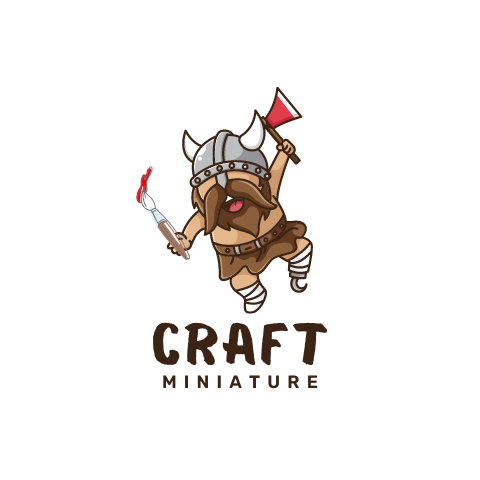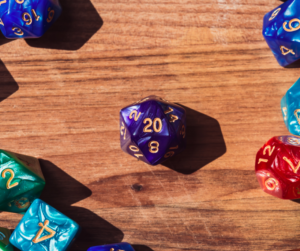Few activities can match the satisfaction of completing a painting project. Whether it’s finishing painting off your last Airfix model or a landscape scene from your latest Warhammer set, the result is always something to be proud of. However, many people find the process of painting to be slow and tedious, mainly if they’re not used to it. This article will provide several handy tips to speed up the process without sacrificing quality.
Choose the right miniature.
When it comes to miniature painting, not all miniatures are created equal. Some models are more accessible to paint than others, and some are more forgiving when it comes to mistakes. If you’re new to miniature painting, it’s best to start with simpler models that don’t have a lot of intricate details. This will allow you to get a feel for the process and build confidence before tackling more challenging projects.

Use the right brushes.
One of the essential tools in a miniature painter’s arsenal is their brush set. A good brush will make it easier to apply the paint evenly and accurately and can make a big difference in the quality of your finished project. When selecting a brush, look for one made of natural fibres with a good point. This will give you the best control and allow you to paint even the smallest details.

Invest in some good quality paint
Another critical factor in painting quality miniatures is the type of paint you use. Cheap paint can be challenging to work with and may not give you the same level of detail and vibrancy as more expensive brands. If you’re serious about painting high-quality miniatures, it’s worth investing in some good-quality paint.
Create a painting schedule
One of the best ways to ensure you stay on track with your painting project is to create a schedule. This doesn’t need to be anything fancy, just a simple plan outlining when you’ll work on your project and how long. Having a schedule will help you stay focused and motivated and prevent you from getting overwhelmed by the project.

Prime your miniature
When it comes to miniature painting, priming your miniature is essential. Primer helps the paint adhere better to the model’s surface and prevents it from peeling or chipping. It also provides a uniform surface for painting, which can help you achieve a more professional-looking finish. If you don’t have any primer on hand, you can use white paint as a makeshift primer. Just be sure to apply it evenly and allow it to dry completely before painting over it. We always recommend applying a primer to your miniatures – there are exceptions where the manufacturer will state not to apply primer to the model. These are the exception to the rule.
If you want to learn more about priming your miniatures correctly, we recommend reading out the ultimate guide to miniature priming. We cover everything, including the colours you need to use to get the best results.

Paint the base colour
One of the most critical steps in miniature painting is painting the base colour. This will provide a foundation for the rest of the paint and help it look smooth and uniform.
When painting the base colour, it’s essential to use a light coat and avoid putting too much paint on the brush. This will help prevent the paint from pooling in the crevices of the miniature and will make it easier to apply the subsequent layers of paint.
Paint the details
Once the base colour has been applied, it’s time to paint the details. This can be daunting, but it’s essential to take your time and be precise.
When painting the details, it’s best to use a smaller brush to get into the tight spaces. It’s also important to be mindful of the paint colours that you’re using. You don’t want to use too many colours, making the miniature look muddy.

Use Quickshade Dip
Once you’ve finished painting the details, it’s time to add shading. This can be done with paint, but we recommend using Quickshade Dip.
Quickshade Dip is a fast and easy way to add shading to your miniature. It’s applied by dipping your miniature into the toner and allowing your figurine to dry for at least 48 hours. Once dry, it will provide a challenging, glossy finish adding depth in all those hard-to-reach places. Quickshade Dip is available in various shades, so you can choose the one that best suits your project.
Finish up with a sealant
When you’re finished painting the miniature, it’s essential to seal the paint with a clear coat. This will protect the paint and prevent it from fading or chipping.
There are several different types of sealants that you can use, but lacquer is the best type for sealing miniatures. Lacquer is durable and will help to protect the paint from damage.
You can learn more about sealing your miniatures with our ultimate guide to applying the sealant to your miniatures. We cover the best methods to apply sealants to your models, so we encourage you to read them.
Take a break
This might sound counter-intuitive, but taking breaks while painting miniatures is essential. This will help you avoid getting overwhelmed by the project and allow you to come back with fresh eyes.
If you find that you’re struggling to focus, take a break and come back later. It’s also a good idea to take breaks after each step of the painting process. This will help you avoid making mistakes and allow you to come back with fresh eyes.
Ways to speed up the painting process
You can speed up the painting process and achieve better results in several ways.
- Use a primed or base-coated miniature – This will save you time and effort as you won’t have to prime or base-coat the model yourself.
- Use an airbrush – Airbrushing can help you apply the paint evenly and quickly.
- Use thinned paint – Thinned paint is easier to apply and dry faster.
- Use a fast-drying sealant – This will help protect the paint and speed up the drying time.
- Paint in layers – This will help you build the colour and achieve better results.
- Don’t be afraid to experiment – There are no rules for painting miniatures. So, don’t be scared to experiment and try new things.
Ultimately, the longer you spend painting your miniatures, the better they will look. Rushing the process will only lead to mistakes and subpar results.
Final Thoughts
Painting miniatures without primer is possible, but there are a few things to remember. First, it’s essential to choose the right paint. Acrylic paint is the best type to use for painting miniatures without primer. Second, you’ll need to prepare the model’s surface before painting. This can be done by


